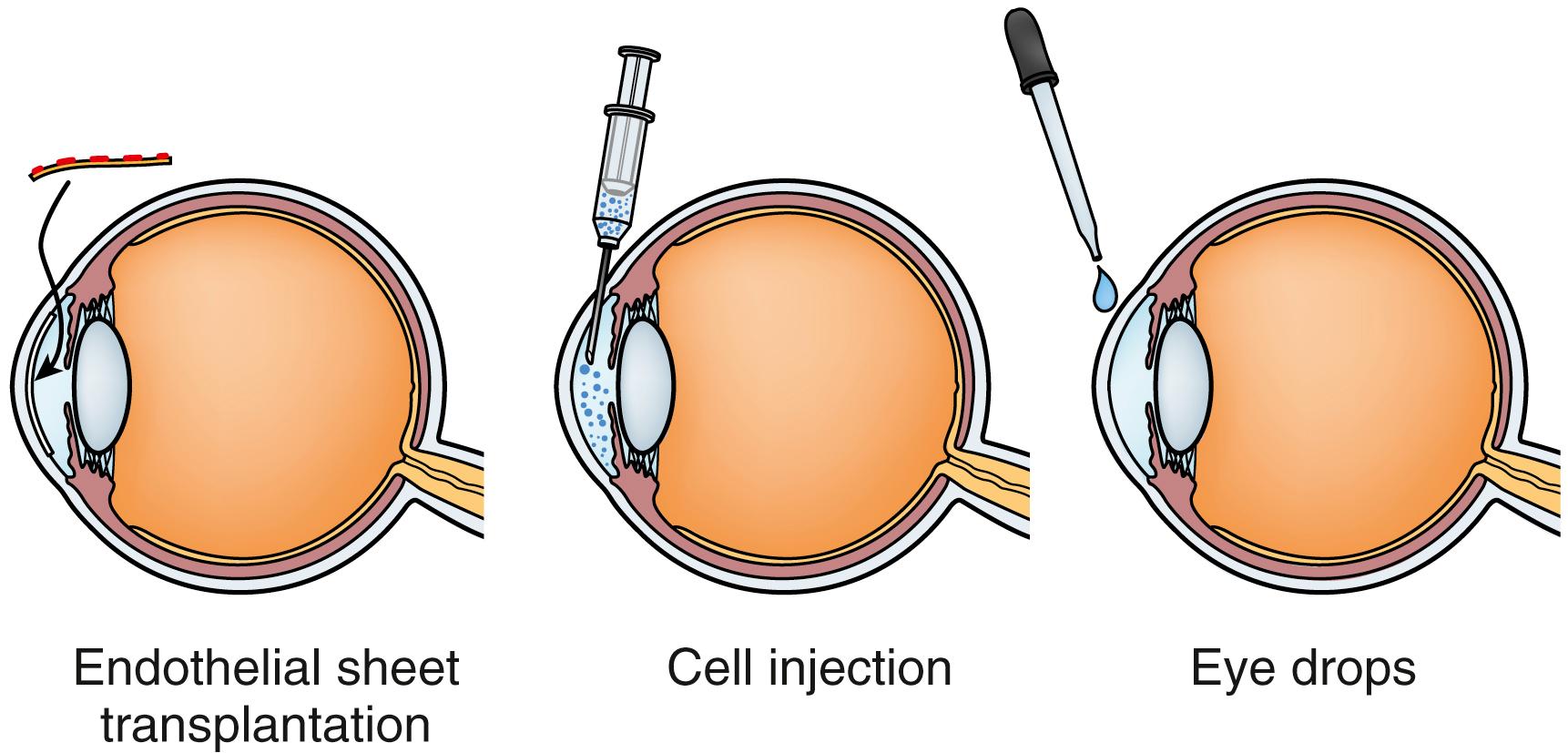Physical Address
304 North Cardinal St.
Dorchester Center, MA 02124
Animal-model experiments showed that a cell-injection therapy combined with the use of a Rho-associated protein kinase (ROCK) inhibitor promotes cultured corneal endothelial cell (CEC) adhesion onto the posterior cornea, ultimately resulting in the recovery of corneal transparency.
The proliferative ability of human CECs (HCECs) is strictly limited, thus making the establishment of an optimal HCEC culture protocol a critical aspect for the clinical application of a cell-based therapy.
Highly pure and well-differentiated (i.e., mature) cultured HCECs that are very similar to in vivo CECs are thought to be suitable for safe and effective clinical use and the obtainment of optimal postoperative outcomes.
Clinical trials are currently underway to investigate the efficacy and safety of a novel cultured HCEC-injection therapy for patients afflicted with various corneal endothelial disorders.
As an alternative to corneal transplantation, a pharmaceutical-based therapy, such as the application of ROCK-inhibitor eye drops, is currently under development for the treatment of mild corneal endothelial dysfunction.
Descemet stripping automated endothelial keratoplasty (DSAEK) and Descemet membrane endothelial keratoplasty (DMEK) are surgical methods that are used to transfer the donor corneal endothelium onto the host eye. However, as an alternative to corneal endothelial keratoplasty, corneal regenerative medicine shows promise for introducing the next-generation state-of-the-art therapy for treating corneal endothelial dysfunction. To that end, and with the latest biologic and immunologic knowledge of human corneal endothelial cells (HCECs) and cutting-edge cell-culture techniques at hand, current translational-research efforts have been aimed at developing a cell-based therapy for corneal endothelial dysfunction. One such innovative pathway involves a surgical treatment using cultured HCECs, such as a cell-sheet transplantation or a cell-injection therapy, while another involves a medical treatment for corneal endothelial dysfunction via the topical application of eye drops ( Fig. 139.1 ).

Become a Clinical Tree membership for Full access and enjoy Unlimited articles
If you are a member. Log in here